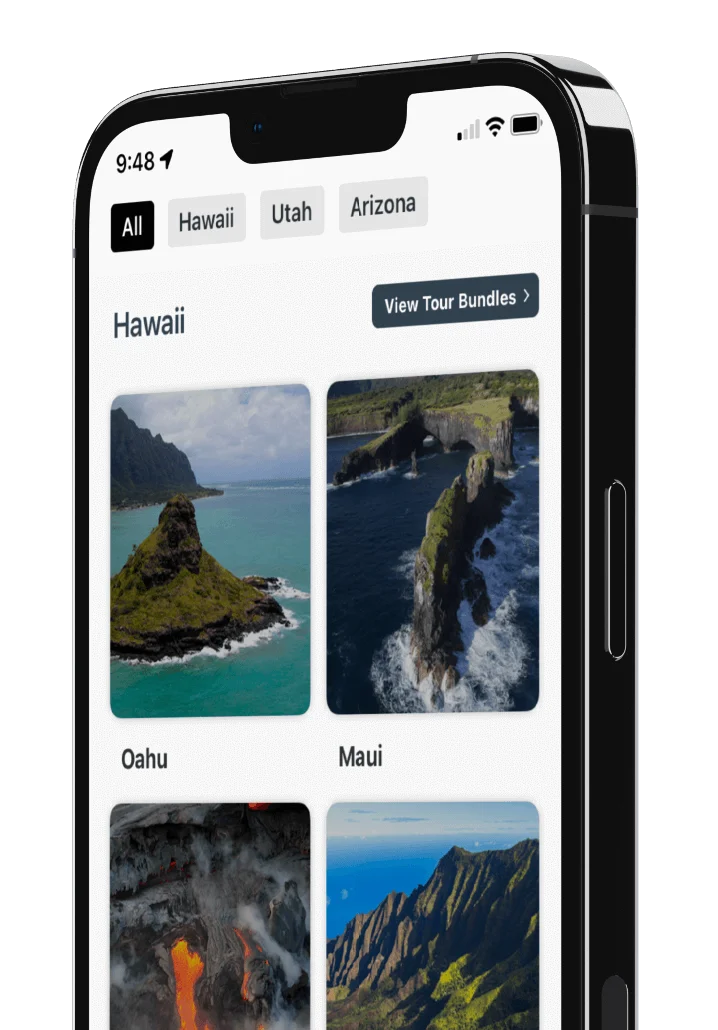
Epic Things To Do at Lassen Volcanic National Park

Introduction
Lassen Volcanic National Park may not be as big or famous as Yosemite or Yellowstone, but don’t let its lesser-known status fool you.
This little park has a lot to offer – from the world's largest plug dome volcano to the most extensive hydrothermal area west of Yellowstone!
On Shaka Guide's Lassen Volcanic National Park Tour, we’ll guide you through this gem of the Cascades.
About Lassen Volcanic National Park
Tucked away in the remote corner of Northern California, Lassen’s fascinating volcanic landscape and stunning scenery are just as spectacular as its larger national park counterparts.
In addition to pristine mountain lakes and wildflower meadows, you’ll find bubbling mud pots, roaring fumaroles, boiling pools – and fewer crowds.
The park also includes all four types of volcanoes found in the world, including Lassen Peak – the largest plug dome volcano on the planet!
It was Lassen Peak’s eruptions in the early 20th century that helped cement its destiny as a national park.
The scenic highway that winds through the park showcases a land marked by fire and ice – as well as destruction and rebirth.
Come explore this dynamic landscape and see how Nature is forever at work.
Getting to Lassen Volcanic National Park
 Shutterstock Image
Shutterstock Image
Nearest Airports
Lassen Volcanic National Park is located in northeast California, about four hours northeast of San Francisco (SFO). There are a few regional airports that are closer to the park but have fewer flight options. Those include:
- Redding (RDD)
- Reno (RNO)
- Sacramento (SMF), and
- Medford (MFR)
Driving
From Interstate 5, you can access the park’s southern entrance via Hwy 36 at Red Bluff and the northern entrance via Hwy 44 at Redding.
And, if you’re traveling through the mountains, you’ll find Lassen on the Volcanic Legacy Scenic Byway.
Best Time To Visit Lassen Volcanic National Park
 Shutterstock Image
Shutterstock Image
Lassen Peak’s original name is Kohm Yah-mah-nee, which, in the Mountain Maidu language, means “Snow Mountain.” With a name like that, it shouldn’t be a surprise that the park gets up to 30 feet of snow every year!
The resulting snowpack can last clear into the summer. Because of the sheer volume of snow, the roads in the park typically don’t open until June – after the snow melts. And they close again around October or November.
With such a short summer season, the best time to visit this mountain park is between July and September.
That’s typically when most of the roads, trails, and park facilities are open for the season.
But…summer is also peak wildfire season in the Cascades, meaning park officials could close parts of the park if there’s a wildfire nearby.
Although the main road through the park closes during the winter, the Manzanita Lake and Southwest Areas are open from November to April for winter activities like:
- sledding
- snowshoeing
- cross-country skiing or
- snow play
Rangers offer snowshoe walks on winter weekends January through March. If you are looking for snow and solitude, winter is the perfect time to visit “Snow Mountain.”
Whenever you visit, make sure to check the park website for current conditions and road closures.
Things To Do In Lassen Volcanic National Park
Although Lassen Volcanic National Park may be one of the smaller national parks, there are plenty of things to see and explore in this fascinating volcanic landscape!
Check out these popular stops, viewpoints, and hikes along the scenic highway that runs through the park.
1. Kohm Yah-mah-nee Visitor Center
 Shutterstock Image
Shutterstock Image
Located near the park's south entrance, the Kohm Yah-mah-nee Visitor Center features exhibits, a gift shop, a cafe, and restrooms.
You can also grab a trail map and chat with a ranger. The name of the visitor center comes from the Mountain Maidu word Kohm Yah-mah-nee which means "Snow Mountain."
It's the original name for the volcano we know today as Lassen Peak.
Summer Hours: 9 am - 5 pm Daily
Winter Hours: 9:30 am - 4:30 pm Wednesday - Sunday
Pets: You can have leashed dogs in the parking area, but the visitor center does not allow them inside.
2. Sulphur Works
 Shutterstock Image
Shutterstock Image
Sulphur Works is the easiest hydrothermal feature to access, and you can view it right from the road.
Take the paved walkway to view steam vents, a boiling mud pot, and a landscape tinged yellow, orange, and red from mineral deposits.
NOTE: If you're interested in seeing even more impressive hydrothermal features, we recommend skipping this stop in favor of the three-mile round-trip hike to Bumpass Hell.
PETS: You can have leashed pets on the sidewalk and in the parking area.
3. Bumpass Hell
 Shutterstock Image
Shutterstock Image
The three-mile moderate round trip trek to Bumpass Hell leads to the park's largest hydrothermal area, boasting 16 acres of boiling springs, mud pots, and roaring fumaroles!
The biggest steam vent, named Big Boiler, is one of the hottest fumaroles in the world--reaching over 300 degrees Fahrenheit.
NOTE: The trail to Bumpass Hell is often one of the last to be snow-free and sometimes doesn’t open until late July. Check the current conditions to see when the trail opens for the season.
CAUTION: Stick to the boardwalks and marked paths in the hydrothermal area. Stepping off-trail can result in serious injury!
PETS: You can have leashed pets in the parking area, but you cannot have them on the trail.
4. Lake Helen
 Shutterstock Image
Shutterstock Image
This deep blue alpine lake nests at the foot of Lassen Peak and perfectly reflects the snowcapped mountain above.
There is a small picnic area near the lake. Feel free to dip your toes or even go for a swim on the southern shore, but be warned that the lake's crystal-clear water is extremely cold!
NOTE: To preserve the scenic view and purity of the water, we do not permit floatation devices of any kind on this lake.
PETS: You can have leashed pets in the parking area, but you cannot have them in or near the lake.
5. Lassen Peak Viewpoint and Trailhead
 Shutterstock Image
Shutterstock Image
Pull into the large parking area for a view of the world's largest plug dome volcano and namesake of this park.
You can even climb to the top of this sleeping 10,500-ft volcano! With an elevation gain of almost 2,000 feet, this strenuous five-mile round-trip trail is not for the faint of heart.
If you’re interested in tackling this climb, make sure to read the safety information at the trailhead and pay close attention to what it says about altitude sickness. Plan for about 4-5 hours for this bucket-list hike.
PETS: You can have leashed pets in the parking area, but you cannot have them on the trail.
6. Kings Creek Falls
 Shutterstock Image
Shutterstock Image
The moderate 3-mile hike to Kings Creek Falls features a spectacular 30-foot cascade. The Dixie Fire burned much of the forest, but life is already beginning to return. Keep your eyes open for wildflowers in the meadows and other evidence of rebirth. This hike takes about 90 minutes.
NOTE: There is limited roadside parking. If you cannot find a spot, we recommend you try again later or skip this hike and do the one to Paradise Meadows instead.
PETS: Pets are not allowed on this trail.
7. Paradise Meadows
 Shutterstock Image
Shutterstock Image
Paradise Meadows is a hidden gem tucked away on the northeast side of Lassen Peak. The moderate three-mile round trip hike follows Hat Creek up through a beautiful forest to a large basin surrounded by steep cliffs.
Nestled in the basin is an enchanting wildflower meadow that looks straight out of a fairytale.
Along the way, you’ll pass a few waterfalls and catch glimpses of Lassen Peak through the trees.
With an elevation gain of 700 feet, be prepared to do a fair bit of climbing. But the heavenly views at the end are so worth it! This hike takes around 1.5 hours to complete.
PETS: Pets are not allowed on this trail.
8. Devastated Area
 Shutterstock Image
Shutterstock Image
The blast zone from Lassen Peak's 1915 eruption is known as the Devastated Area. After the blast, the eruption leveled this entire forest and turned it into a gray desolate wasteland.
But today, the name Devastated Area no longer matches what you'll see. Over the past century, nature has been hard at work, reclaiming the landscape and breathing new life into a once-desolate area.
Plants have risen from the ashes, and wildlife has returned. It’s a testimony of Nature’s power to destroy–and to restore.
Take the easy, half-mile walk through the Devastated Area. The accessible loop features historic photos and accounts of the iconic 1915-1916 eruptions with audio narration at each interpretive station. You'll find picnic tables and restrooms here as well.
Pets: You can have leashed pets in the picnic area, but you cannot have them on the trail.
9. Hot Rock
 Shutterstock Image
Shutterstock Image
Pull over to the side of the road and get a photo of the massive 30-ton boulder named Hot Rock.
During one of Lassen's big eruptions, this giant lava boulder ejected out of the magma chamber and flew down the mountain in a rock avalanche to its final resting place here--five miles away!
A few days later, local photographer B.F. Loomis snapped a picture of the rock. Because it was still steaming and hot to the touch, he named it Hot Rock.
You can see Loomis' historic photograph of Hot Rock in the Loomis Museum.
10. Manzanita Lake Area
 Shutterstock Image
Shutterstock Image
The Manzanita Lake Area in the park’s northwestern corner includes a main visitor area with restrooms, a ranger station/gift shop, and the Loomis Museum where you’ll find helpful rangers and cool exhibits.
You can also hike the easy loop trails around Reflection Lake and Lily Pond.
But the main attraction on this end of the park is beautiful Manzanita Lake. Here, you can:
- camp
- swim
- rent a kayak
- throw in a fishing line, or
- walk the picturesque lakeside trail
Less than two miles roundtrip, the easy shoreline path circles the lake and offers stunning views of Lassen Peak and Chaos Crags.
Pets: You can have leashed pets in the campground and parking areas, but you cannot have them in any park building, on any hiking trail, or in any of the lakes.
Take Shaka Guide’s Lassen Volcanic National Park Tour!
To get the most out of your volcanic adventure, let Shaka Guide show you the way!
We’ve done all the work for you, so you can just relax and enjoy the drive. Our curated itinerary will take you to the best places in the park, including every stop mentioned in this article–plus a few more!
With 16 potential stops and nearly 40 points of narration, this audio tour is packed with helpful information, fascinating stories, and moving music that will make this volcanic landscape come alive.
You can easily drive the tour in just one day. But if you want to hike every trail or spend time relaxing at Manzanita Lake, we recommend spending at least two days in the park.
Hitting the popular trails early in the day will help you avoid the crowds and maximize your time.
Of course, if you have less time, you can choose the places you want to visit and skip the rest. The tour never expires, so you can always come back another time.
NOTE: Our tour is proud to feature music from Lassen’s 2022 Artist in Residence, Marko Byzer. The North State Symphony performs Byzer’s original score entitled “Lassen Awakes!” and Byzer recorded sounds from the park’s hydrothermal features.
Final Thoughts
 Shutterstock Image
Shutterstock Image
The American naturalist John Muir once said, “Nature is ever at work, building and pulling down, creating and destroying, keeping everything whirling and flowing…out of one beautiful form into another.”
Lassen Volcanic is the perfect place to watch Nature at work and be inspired by its ever-changing forms.
Like this article? Share it on Pinterest!

Ready to take the tour? Check out Shaka Guide's Lassen Volcanic National Park Tour!
We hope that we’ve given you all the information you need to make the most of your day. Your vacation is extremely important to us so if you have any questions feel free to reach out at aloha@shakaguide.com.
For more detailed information to help you plan, check out our Lassen Volcanic National Park Itinerary and Know Before You Go article.

 Buy Gift Card
Buy Gift Card



















